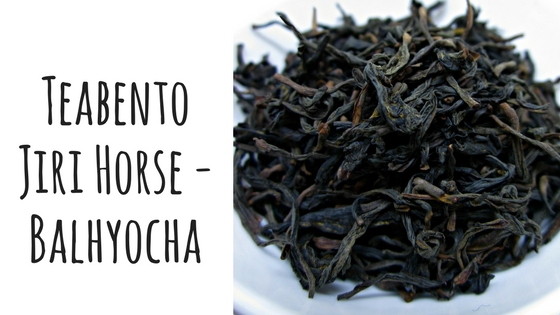Country of Origin: South Korea
Leaf Appearance: small, dark, and wiry
Steep time: 30 seconds
Water Temperature: 200 degrees
Preparation Method: porcelain gaiwan
Liquor: reddish amber
Teabento names each of the teas they offer after animals and photographs the leaves inside of simple line drawings of their namesake. It’s admittedly a bit gimmicky but I love it anyway. Something you might not know about me is that I am a big animal person, especially when it comes to horses. That was definitely why I picked this one first out all of the samples that Teabento generously sent me.

Balhyocha is often referred to as a black tea but things are always so cut and dry. Any tea that is oxidized can be called balyhocha. This includes what might be categorized as oolong (depending on your definition) as well as black tea if it were grown elsewhere. Tony Gebely at World of Tea has an excellent article on South Korean Balhyocha and Hwangcha if you’d like to dig into this category further.
This is only the second balhyocha that I’ve had the opportunity to write about (though there might be a few more in the works). The dry leaves were dark and slightly wiry, kind of a cross between Dancong and Wuyi oolong in appearance. From the very first sip, I was struck by the intense cocoa aroma. There was a lot of natural sweetness with a nutty background that lingered on my palate. That combined with a silky smooth texture made this tea a very enjoyable and memorable cup.
I found it interesting that this tea lacked the kind of maltiness that black teas from other regions will often have. Is it a product of terroir or perhaps the processing technique? I’ll definitely need to drink quite a lot more before I get to the bottom of that query. Gongfu is definitely the way to go with this tea. My personal preference is to leaf a bit heavier. Teabento’s recommendation of 4g per 120ml makes a good starting point for experimentation though.
Jiri Horse – Balhyocha sample provided for review by Teabento.

